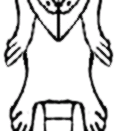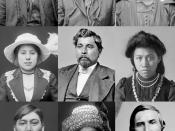Assessment's of Indian Families
When doing an assessment of a Native American family, the social worker needs to understand four quadrants of the Indian family. The focus of this paper is to introduce the four quadrants, define them, and explain the Indian Child Welfare Act. The four quadrants are context, mental, physical, and spiritual. Legally, Native American families and child welfare have to be approached differently than other families. As a social worker, it is crucial to understand and respect Native American culture to provide a helpful and accurate assessment.
The first quadrant, context, is used to describe the context within which Indian families function. Indian families are filled with strong resources and valuable survival skills. It is a system in which every member of the family and tribe contributes for the good of every member. This wisdom and contribution is taught to be shared without reciprocation.
The second quadrant, mental, is used to describe how the Indian family supports the mental development of the child.
In the mental area the Indian family teaches through self-talk and stories to educate how others have managed. Storytelling is one of the greatest teaching resources for realizing values and life skills.
The third quadrant, physical, is used to describe the place in the family, it's structures, and roles. Kinship and a strong attachment to family members creates a strong bond. Food is also a very special part of Native American kinship. Cultural foods, family foods, and the use of food to mark special occasions contribute. Rituals around eating together also contribute to the health of the family.
The fourth quadrant, spiritual, is used to describe spiritual influences and both positive and negative learned practices. In Indian communities, traditional spiritual ways play a significant role in the practices of the family. Usually they...


